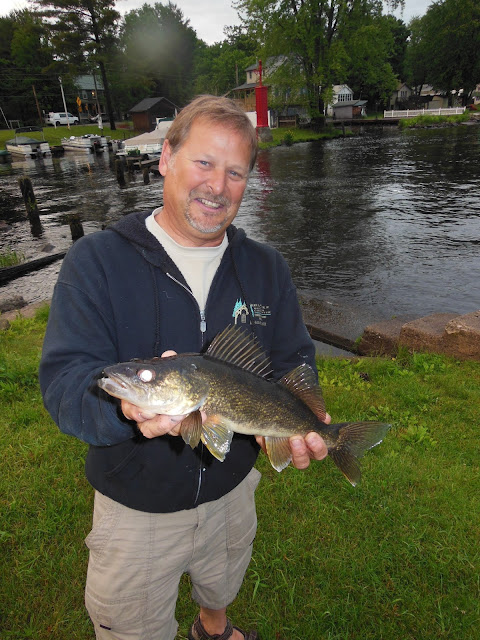By
Spider Rybaak
 |
| Canoeing the pond, Deer Creek WMA. |
Oswego County is blessed with some of the largest, most awesome wildlife management areas in New York. None, however, comes close to offering the wide variety of recreational opportunities, steeped in natural beauty, Deer Creek WMA provides.
One of three WMAs punctuating the Eastern Lake Ontario Dune and Wetland Area, a 17-mile-long barrier system boasting the tallest sand dunes between Cape Cod and Lake Michigan, Deer Creek WMA sprawls over 1,771 acres. Tucked between the mouth of the Salmon River and Sandy Pond, two heavily developed areas famed for their splendid beaches and sunsets, it’s like a breath of wilderness among the cottages; and it’s all close to the road.
Its most popular feature this time of year is a mile-long cobblestone beach. It used to be sandy, but the jetty that keeps the mouth of the Salmon River from wandering blocks currents from sweeping sand off a submerged dune out in the lake and bringing it close to the beach where it's picked up by waves and deposited on shore.
Without this continuous supply of sand to replenish what the waves wash away during high water, all that’s left on the beach when the water goes down is cobbles.
Fortunately, the order of this natural masterpiece prevented man’s folly from turning its undulating habitats into a level wasteland. You see, a dune and wetland area is comprised of six zones stretching from the water to the upland forest marking the end of the barrier system: the beach, fore dune, trough, secondary dune, back dune and wetland. Like the front in a battle, the fore dune is the system’s first line of defense, protecting its interior from the worst Lake Ontario dishes out. Luckily, it did its job long enough for environmentalists to see the sand slipping through the stones and take measures to prevent further erosion.
A saddle-like trough separates the fore dune from the back dune. A trail, cut over the years by hikers, slices through its patchwork of beach grass and poison ivy.
Beyond the trough, the secondary dune begins its steep ascent, climbing up to 40 feet in spots. Clumps of beech grass cling to its sandy sides all the way to the crown cropped in mature cottonwood s. On the other side, the back dune descends into a pond created by Deer Creek on its last leg to its mouth. By this point it moves so slow, it seeps into the sand before reaching the lake.
The stream’s water temperature keeps the system cool enough to support thriving populations of fish, including largemouth bass (some over 6 pounds), northern pike (most are axe handles, but some go 30 inches) bullheads up to a foot long, and yellow perch and sunfish averaging 6 inches. It even harbors bowfin; a native species that’s been around since the Jurassic period and can breathe air.
Canada Geese, mallards, blue herons, kingfisher, osprey, and a variety of less common water fowl; and mammals like mink, muskrats and beaver find Deer Creek Marsh to their liking. Pheasants and cottontail rabbits flourish in the WMA’s grasslands. Whitetail deer, raccoons and turkeys flourish in the woods tracing its edges.
Most argue the best way to see the marsh is by canoe. “You can silently paddle up to everything from beavers to geese,” argues cousin Staash.
The access site on NY 3, 2 miles north of Port Ontario, offers parking for about 10 cars and a beach launch.
Others prefer to hike it’s two most prominent features, the beach and sand dune. Although climbing and walking on dunes is prohibited, the trough between the fore dune and secondary dune has a ½-mile long trail running through it, and a couple of boardwalks allowing folks to cross over the fore dune without hurting it or brushing the poison ivy that grows on it like a weed. The southern boardwalk ends in a fishing platform looming over the pond.
Get there by heading north on NY 3 from Port Ontario for a little over 2 miles. Turn left on Rainbow Shores Road, drive to the end, turn left on South Rainbow Shores Road (unmarked), bear left at the fork a few hundred feet later and continue to the parking lot.
WMAs are managed…you guessed it, for wildlife and related recreation: primarily hunting, fishing , bird watching, stuff like that.
Off-road vehicles, camping, and camp fires are prohibited.
 |
| Boardwalk. |
 |
| Walking the Trough. |
 |
| Gateway to the beach. |


